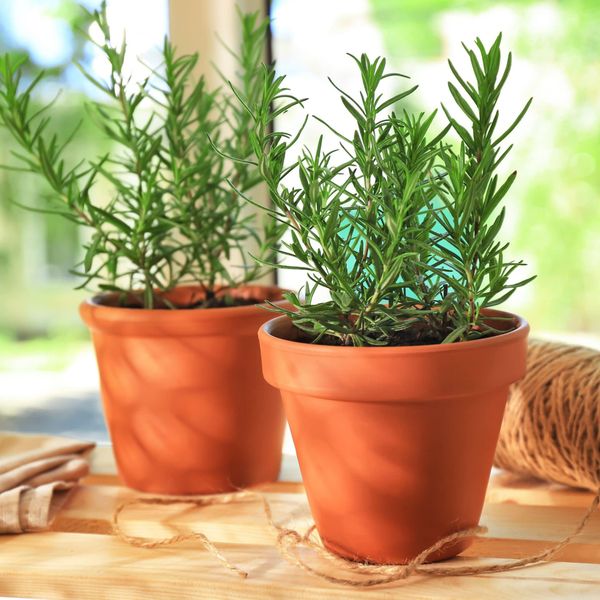The Best Soil and Climate for Growing Rosemary: A Complete Guide

Rosemary is a fragrant, drought-tolerant herb beloved for its culinary and medicinal uses. But even this hardy plant has specific needs—get the soil or climate wrong, and it’ll struggle. Whether you’re a farmer, landscaper, or home gardener, understanding rosemary’s preferences is key to a thriving crop. Let’s dig into the essentials.
Why Soil & Climate Matter for Rosemary
Rosemary (Salvia rosmarinus ) hails from the Mediterranean, where it thrives in dry, rocky soils and sunny, breezy conditions . Mimicking these conditions is critical:
- Poor drainage → Root rot.
- High humidity → Fungal diseases.
- Cold snaps → Leaf damage.
Mastering soil and climate ensures rosemary grows lush, aromatic, and resilient.
Ideal Soil Conditions for Rosemary
1. Prioritize Drainage
Rosemary’s roots suffocate in soggy soil. Ensure:
- Soil Types : Sandy, loamy, or gravelly soils work best.
- Amendments : Mix in perlite or coarse sand (20–30%) to improve drainage.
- Avoid Clay : If unavoidable, plant in raised beds.
2. pH Range
- Target pH : 6.0–7.5 (slightly acidic to neutral).
- Test Kits : Use a DIY strip or send samples to a local extension service.
- Adjustments :
- Too Acidic? Add lime.
- Too Alkaline? Mix in compost or sulfur.
3. Keep It Lean
Rosemary thrives in nutrient-poor soils. Over-fertilizing leads to leggy growth.
- Organic Options : Light compost or worm castings (once/year).
- Avoid : High-nitrogen fertilizers.
Climate Conditions for Thriving Rosemary
1. Temperature
- Ideal Range : 60–80°F (15–27°C).
- Cold Tolerance : Mature plants survive down to 20°F (-6°C).
- Frost Protection : Use row covers or cloches in winter.
2. Sunlight Requirements
- Daily Minimum : 6–8 hours of direct sun.
- Indoor Growing : South-facing windows or grow lights.
3. Humidity & Airflow
- Problem : High humidity causes powdery mildew.
- Solutions :
- Space plants 2–3 feet apart.
- Use gravel mulch to reduce splashback.
- Prune for airflow.
Adapting to Your Climate
Cool Climates (USDA Zones 5–7) :
- Varieties : ‘Arp’ or ‘Hill Hardy’ for cold tolerance.
- Tips : Mulch with straw in winter; plant near south-facing walls.
Wet Climates :
- Drainage Fixes : Raised beds + gravel mulch.
- Watering : Avoid overhead irrigation; water at the base.
Hot/Dry Climates (USDA Zones 8–10) :
- Watering : Drip irrigation 1–2x/week (deep, infrequent watering).
- Mulch : Use white gravel to reflect sunlight and retain moisture.
Planting & Care Practices
1. Planting Tips
- Spacing : 2–3 feet apart for airflow.
- Depth : Plant at the same level as the nursery pot.
2. Watering Schedule
- Rule : Water when the top 2 inches of soil are dry.
- Avoid : Daily watering—even in pots.
3. Pruning & Harvesting
- Prune Early Spring : Trim 1/3 of the plant to encourage bushiness.
- Harvest : Snip stems before flowering for peak flavor.
Troubleshooting Common Issues
- Root Rot : Yellow leaves + mushy stems. Fix : Improve drainage; reduce watering.
- Powdery Mildew : White spots on leaves. Fix : Remove affected leaves; apply neem oil.
- Pests : Aphids or spider mites. Fix : Spray with insecticidal soap or blast with water.
FAQs for Growers
Q: Can I grow rosemary indoors?
A: Yes! Place in a sunny window and use well-draining soil.
Q: How often should I fertilize rosemary?
A: Rarely—once/year with compost is enough.
Q: Why is my rosemary turning brown?
A: Likely overwatering or cold damage. Check roots and adjust care.
Grow Your Best Rosemary Yet!
Rosemary rewards growers who respect its Mediterranean roots. With well-draining soil , ample sunlight , and a watchful eye on climate needs, you’ll enjoy bountiful harvests year-round.
Ready to Elevate Your Garden?
👉 Explore our shop for premium soil mixes, climate guides, and organic pest control solutions.

